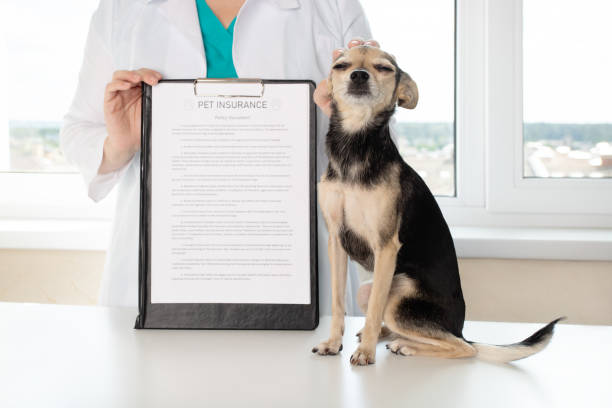As pet ownership continues to rise globally, the demand for pet insurance has grown rapidly, making it an attractive niche for insurance agents in 2025. With veterinary costs increasing and more pet parents seeking peace of mind, pet insurance has evolved into a booming sector within the broader insurance market. For agents, understanding the commission structure is essential to building a successful business in this space.
This article provides an in-depth look at the pet insurance agent commission chart for 2025, outlines key factors that affect earnings, and answers frequently asked questions.
What Is Pet Insurance Commission?
Table of Contents
A commission is a percentage of the insurance premium paid to agents for selling a policy. Unlike some types of insurance, pet insurance commissions can include both upfront and residual earnings (renewals), making it a source of recurring income for agents.
Pet Insurance Agent Commission Chart (2025):
Commissions vary based on insurer, sales channel (captive or independent), and whether the policy is new or a renewal. Below is a general range for 2025:
| Type of Commission | Low-Tier Agents | High-Tier Agents / Agencies |
|---|---|---|
| New Policy Commission | 10% – 15% | 20% – 25% |
| Renewal Commission | 5% – 8% | 10% – 15% |
| Multi-Pet Discounts | Flat Rate or % Bonus | Additional +2% – +5% |
| Optional Add-ons (e.g., Dental, Wellness) | 5% – 10% | 10% – 15% |
Key Factors Affecting Commission Rates:
Several factors influence how much a pet insurance agent earns:
Sales Volume:
High-producing agents often qualify for tiered commission increases or quarterly performance bonuses.
Policy Type and Add-ons:
Comprehensive plans or those including dental, wellness, or alternative therapy coverage typically yield higher commissions than accident-only policies.
Direct vs. Affiliate Sales:
Direct agents tend to earn higher commissions compared to affiliate or referral partners, who typically earn between 5%–10%.
Underwriting Risk:
Policies covering senior pets or exotic animals may offer different commission structures due to risk-based pricing.
Commission Payment Models:
There are three common ways pet insurance agents get paid:
| Model | Description |
|---|---|
| Upfront Commissions | Paid when a new policy is sold |
| Renewal Commissions | Paid annually or monthly for policies that remain active |
| Performance Bonuses | Given quarterly or annually for meeting certain sales or retention thresholds |
Captive vs. Independent Agents:
Captive Agents (working directly for an insurance provider):
- Usually receive a base salary + commission
- May receive lower commission rates but enjoy more stability
Independent Agents/Brokers:
- Operate under their own license or through a general agency
- Earn higher commissions but are responsible for their own marketing and operations
Digital Affiliate Programs:
Affiliate marketers, pet bloggers, and veterinary influencers can earn pet insurance commissions too:
| Affiliate Sales Channel | Typical Commission |
|---|---|
| Website Referral/Affiliate Link | 5% – 10% |
| Email Campaigns or Influencer Promo | 5% – 8% |
| Partnered Vet Clinics | 8% – 12% |
Commission Trends in 2025:
- Increased competition among insurers is leading to higher commissions and bonus structures.
- Tiered and loyalty bonuses are more common.
- Wellness add-ons and preventive care packages now offer commission incentives due to their growing popularity.
Conclusion:
Pet insurance is a growing and profitable niche for agents in 2025. With rising pet care costs and increased awareness among pet owners, agents have numerous opportunities to earn through both new policy commissions and long-term renewals. By understanding the commission chart and leveraging strategic partnerships, agents can maximize earnings while providing a valuable service to pet families.
FAQs:
Q. How do pet insurance agents earn money?
A. Agents earn a commission for each policy sold and often receive renewal commissions as long as the policy stays active.
Q. What is the average commission rate for pet insurance agents in 2025?
A. New policy commissions typically range from 10% to 25%, with renewals adding 5% to 15%, depending on performance and provider.
Q. Do agents earn commissions on renewals?
A. Yes. Many insurers offer ongoing renewal commissions, providing a recurring income stream for agents.
Q. Can pet insurance agents earn bonuses?
A. Yes. Bonuses may be awarded for hitting sales targets, high retention rates, or selling value-added services like wellness plans.
Q. Are there licensing requirements to sell pet insurance?
A. In many regions, yes. Selling pet insurance often requires a property & casualty license, although some affiliate programs may not.
Q. Is it profitable to sell pet insurance as an independent agent?
A. It can be. Independent agents enjoy higher commissions and flexibility, especially if they build strong referral networks with vets, groomers, or breeders.
Q. How do affiliate marketers earn from pet insurance?
A. Affiliates earn a commission for each referred sale, typically tracked via links or codes. Commission rates range from 5% to 10%.
Q. What kinds of policies offer the highest commissions?
A. Comprehensive plans with wellness and dental coverage usually provide the highest payouts, especially for multi-pet households.
Q. When do agents get paid?
A. Commission payments are generally made monthly or quarterly, depending on the insurer’s payout cycle and the agent’s agreement.
Q. Can veterinarians sell pet insurance for a commission?
A. Yes, if licensed or operating under an affiliate arrangement. Many providers partner with vet clinics to offer policies directly to clients.
